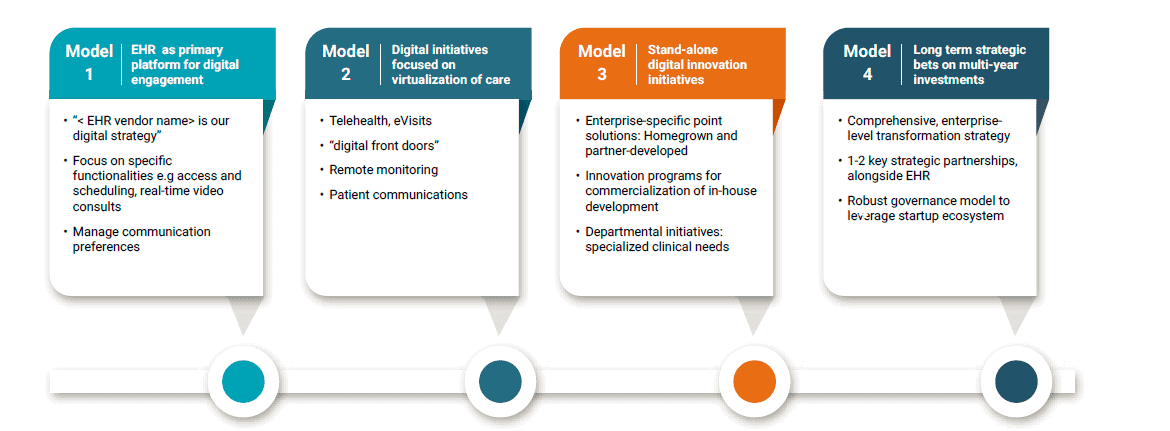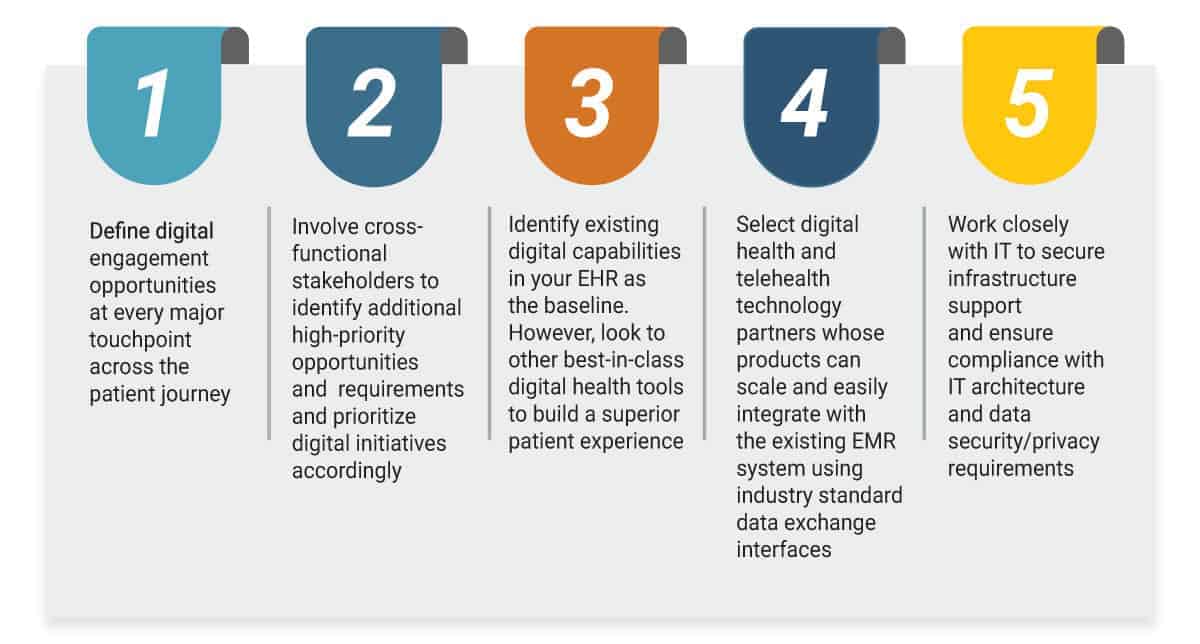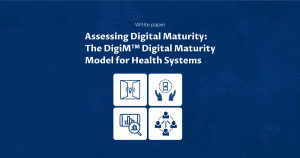POINT OF VIEW
Organization Models
and
Best Practices for
Healthcare Digital Transformation
in a Post-COVID-19 Era

In a post-COVID-19 era, the virtualization of care is accelerating, putting enormous pressure on health systems who find themselves behind the telehealth adoption curve. Many health systems that were moving along at a leisurely pace prior to the pandemic, found themselves making overnight choices for launching video consult capabilities, along with related online access tools such as self triaging, scheduling, and online payments. Health systems that had chosen to default to their EHR systems, as the primary digital health platform, have had to rethink their platform choices in the light of a long-term shift to virtual care models for designing the seamless online patient experiences of the future.
Digital maturity models in healthcare
Digital transformation efforts in healthcare correspond with one of the four models described in the visual below:
 Figure 1: Digital Maturity ModelsTM
Figure 1: Digital Maturity ModelsTM
Digital maturity in healthcare today falls mostly in one of the models described in Figure. 1 above. Most health systems are in models 1 and 2, and a small number are maturing towards an enterprise approach and roadmap for healthcare digital transformation in model 4. Model 3 typically sits alongside one of the other models in large enterprises with dedicated innovation groups that focus on commercializing internal innovation and making strategic investments in startups.
The changing landscape has also forced healthcare enterprises to review their options when it comes to the organizational models required to drive healthcare digital transformation in the post-COVID-19 era. What may have been primarily an IT-enabled capability is now a strategic priority that requires a deep appreciation of consumer experience journeys, cross-functional collaboration to enable seamless experiences, and technology expertise to implement digital engagement priorities. Read more…
Healthcare Digital Transformation: A primer for healthcare executives and technology solution providers
The Digital Transformation Office
An interesting trend is a small number of health systems that are setting up healthcare digital transformation offices (DTO) to drive enterprise-wide digital transformation initiatives. Figure 3 below provides a typical charter for a DTO.
A DTO is distinct from a Chief Digital Officer role; in that it is a stand-alone function tasked with actively enabling healthcare digital transformation initiatives across the enterprise. The DTO is typically led by a senior leader in the organization with:
- Significant influence across functions,
- The authority and empowerment to make critical decisions related to investments priorities,
- Technology platform decisions, and
- A board-approved budget to drive transformation.
What successful healthcare digital transformation programs do right
Damo Consulting’s work with healthcare enterprises has revealed several best practices in accelerating healthcare digital transformation using one of the organizational models described above.
- Start with the end in mind: Successful digital programs define the future state before developing a roadmap and identifying
technology solutions. For instance, at a major internationally reputed health system, enterprise goals for digital 2019-23 included shifting 50% outpatient visits to virtual care and 25% of in-patient visits to days-at-home (this was pre-COVID-19, and the goals have likely changed since then). - Prioritize high-impact digital engagement opportunities in patient journey: At one health system
we worked with, we identified high-priority initiatives through a three-pronged approach:- Extensive market research on competitor initiatives,
- An internal survey covering a large number of cross-functional stakeholders, and
- 1:1 interviews with the senior-most leaders in the health system for their views on enterprise priorities.
The resulting roadmap identified over 35 high priority initiatives to be implemented over two phases. The roadmap gained wide acceptance across the enterprise to move forward. Read more…
“We need to ensure smooth delivery of services. All the way from the clinician to the patient experience, the entire continuity of care virtually should be flawless.”
Aaron Miri, Chief Information Officer at The University of Texas at Austin, Dell Medical School, and UT Health Austin
Five principles for successful healthcare digital transformation in a post-COVID-19 era















